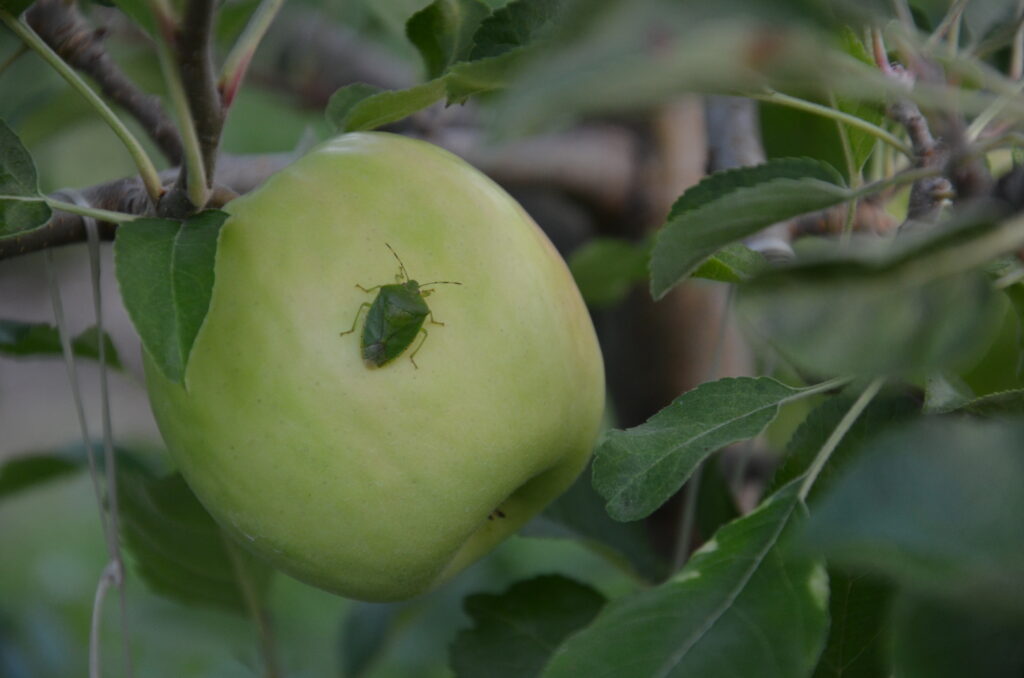Green Stink Bug Emergence In Tree Fruit. July 14

At the Hudson Valley Lab we have not yet seen populations that warrant management.
Both green and brown marmorated stink bug contributed to this injury, producing both cosmetic as well as reduction in fruit quality. In general stink bugs have become a late season challenge to integrated pest management programs requiring the use of broad-spectrum insecticides in the organophosphate, carbamate, and pyrethroid class of chemistry. The neonicotinoid class is considered a reduced risk group of insecticides to replace the organophosphate class for pest management. One of the more effective insecticides in this group, Dinotefuran, has been found to be very effective in managing the stink bug complex. Yet the product not yet been allowed by DEC to receive a NYS label or Section 18 for use on tree fruit against the stink bug complex.
An alternative pest management tool in place of the older classes of insecticides is the neonicotinoid, Actara. Actara (A.I. Thiamethoxam) has conservative 35 DTH and A.I. per acre restrictions. In New York State, do not exceed 0.172 lb. a.i./A (11 oz.) of Actara or thiamethoxam containing products per acre per growing season on Pome Fruit. In light of these restrictions, the use of the pyrethroids Bifenthrin (Bifenthure, Brigade) or Fenpropathrin (Danitol) have excellent efficacy against the SB complex and are relatively ‘user friendly’ with lower mammalian toxicity but greater reduction of biological control agents such as the predatory mite T. pyri and predaceous beetle complex.
Below are the materials registered in NYS for use against the BMSB, including eficacy against stink bug in general.

More resources for management of the stink bug complex can be found here.


